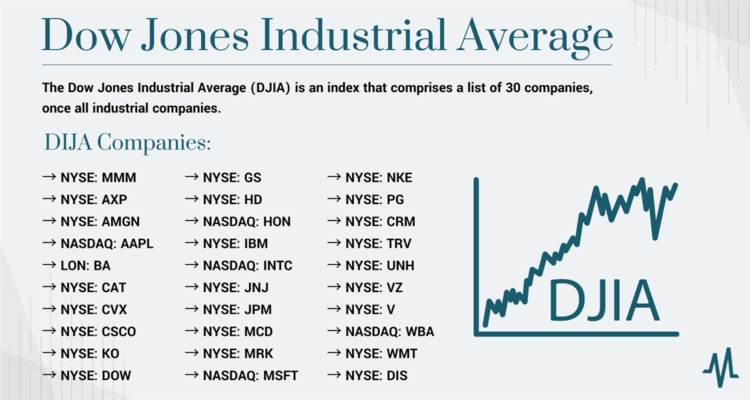
How can you make money in stock market – How can you make money in the stock market? It’s a question that has intrigued investors for decades, and the answer, like the market itself, is complex. But don’t worry, it doesn’t have to be a mystery. This guide will walk you through the fundamentals of the stock market, from understanding basic concepts to developing your own investment strategies.
We’ll explore different ways to invest, the importance of managing risk, and the tools and resources available to help you navigate this exciting world. Whether you’re a seasoned investor or just starting out, this guide will equip you with the knowledge and confidence to make informed decisions in the stock market.
Understanding the Stock Market

The stock market is a complex but fascinating system that allows individuals to invest in publicly traded companies. It is a vital part of the global economy, enabling businesses to raise capital and investors to participate in economic growth. Understanding how the stock market works is crucial for anyone interested in investing their money.
What are Stocks?
Stocks represent ownership in a publicly traded company. When you buy a stock, you become a shareholder, owning a small portion of the company. The value of a stock can fluctuate based on various factors, including the company’s performance, industry trends, and overall market conditions.
How are Stocks Traded?
Stocks are traded on exchanges, which are organized marketplaces where buyers and sellers meet to negotiate prices. These exchanges operate electronically, allowing investors to buy and sell stocks through brokers. When you place an order to buy or sell a stock, your broker will execute the order on your behalf, matching it with another investor’s order at a specific price.
Types of Stocks
There are various types of stocks, each with unique characteristics:
- Common Stock: This is the most common type of stock, giving shareholders voting rights and the potential to receive dividends. The value of common stock is directly influenced by the company’s performance.
- Preferred Stock: This type of stock offers a fixed dividend payment, typically higher than common stock dividends. However, preferred shareholders usually do not have voting rights.
- Growth Stocks: These stocks are associated with companies expected to grow rapidly, often reinvesting their profits back into the business to fuel further expansion. While they may offer higher returns, they also carry higher risk.
- Value Stocks: These stocks are undervalued by the market, often because of a temporary downturn or overlooked potential. Value investors seek companies with strong fundamentals that are trading at a discount to their intrinsic worth.
Ways to Invest in the Stock Market
There are several ways to invest in the stock market:
- Brokers: Full-service brokers provide investment advice and research, while discount brokers offer lower fees but limited support. Investors can buy and sell individual stocks through brokers.
- Mutual Funds: Mutual funds pool money from multiple investors to buy a diversified portfolio of stocks. This allows investors to spread their risk across a wide range of companies.
- Exchange-Traded Funds (ETFs): ETFs are similar to mutual funds, but they are traded on exchanges like individual stocks. They offer diversification and lower costs than mutual funds.
Investing Strategies: How Can You Make Money In Stock Market
Investing in the stock market involves various strategies that investors can employ to achieve their financial goals. Understanding different strategies can help you navigate the complexities of the market and make informed investment decisions.
Fundamental Analysis
Fundamental analysis is a method of evaluating a company’s intrinsic value based on its financial performance, industry outlook, and overall economic environment. It involves analyzing key financial statements such as the income statement, balance sheet, and cash flow statement to assess a company’s profitability, solvency, and liquidity. Investors use this information to determine whether a company’s stock price is undervalued or overvalued compared to its actual worth.
- Financial Ratios: Investors use financial ratios to compare a company’s performance over time and against its competitors. Common ratios include return on equity (ROE), price-to-earnings ratio (P/E), and debt-to-equity ratio. A high ROE suggests strong profitability, while a low P/E ratio might indicate a company is undervalued.
- Industry Analysis: Understanding the industry in which a company operates is crucial. Factors like industry growth prospects, competitive landscape, and regulatory environment can significantly impact a company’s future performance. For example, a company in a rapidly growing industry might have a higher potential for growth than one in a mature or declining industry.
- Economic Analysis: The overall economic environment can also influence a company’s performance. Factors like interest rates, inflation, and unemployment can affect consumer spending, business investment, and overall economic growth. Investors need to consider how these factors might impact a company’s future prospects.
Technical Analysis
Technical analysis is a method of forecasting future price movements based on historical price and volume data. It uses charts, patterns, and indicators to identify trends, support and resistance levels, and potential buying and selling opportunities.
- Chart Patterns: Technical analysts look for recurring patterns in price charts, such as head and shoulders, double tops, and triangles, to predict future price movements. These patterns can suggest a change in trend or a continuation of the existing trend.
- Technical Indicators: Technical indicators are mathematical calculations based on historical price and volume data. Examples include moving averages, relative strength index (RSI), and MACD. These indicators can help identify overbought or oversold conditions, confirm trends, and generate buy or sell signals.
- Volume Analysis: Technical analysts also analyze trading volume to confirm trends and identify potential breakouts or breakdowns. High volume during a price move can indicate strong buying or selling pressure, while low volume might suggest weak momentum.
Investment Strategies
| Investment Strategy | Description | Focus | Example |
|---|---|---|---|
| Value Investing | Investing in undervalued companies with strong fundamentals and a potential for future growth. | Long-term growth, intrinsic value | Warren Buffett’s investment in Coca-Cola |
| Growth Investing | Investing in companies with high growth potential, often in rapidly growing industries. | Rapid earnings growth, innovation | Investing in technology companies like Amazon or Tesla |
| Momentum Investing | Investing in companies with strong recent price performance, often based on technical analysis. | Short-term price trends, market sentiment | Investing in a stock that has recently experienced a sharp increase in price |
Making Money in the Stock Market

Investing in the stock market offers the potential to generate profits through various mechanisms. While the market can be volatile, understanding the fundamental ways to make money can help you develop a successful investment strategy.
Capital Appreciation
Capital appreciation is the increase in the value of an asset over time. In the stock market, this means buying shares of a company at a certain price and selling them later at a higher price. The difference between the purchase price and the sale price represents your profit.
For example, if you buy 100 shares of a company at $50 per share and the share price rises to $75, your investment has appreciated by $25 per share. You can then sell your shares for a total profit of $2,500 (100 shares x $25).
Capital appreciation is a key driver of profits in the stock market, and it’s influenced by factors such as:
- Company performance: Strong earnings, revenue growth, and innovation can lead to higher share prices.
- Market sentiment: Investor confidence in the company and the overall economy can impact share prices.
- Industry trends: Growth in a specific industry can benefit companies within that sector.
Dividends
Dividends are payments made by companies to their shareholders, typically from their profits. They represent a portion of the company’s earnings distributed to investors. Dividends can provide a regular stream of income for investors, even if the share price doesn’t increase.
Dividends are usually paid out quarterly, but the frequency can vary depending on the company.
Companies that pay dividends are often seen as more stable and mature, as they have a history of profitability and a commitment to shareholder returns. The dividend yield, which is the annual dividend payment divided by the share price, is a measure of the dividend’s attractiveness.
Successful Investors and Their Strategies
Many successful investors have employed different strategies to generate profits in the stock market. Here are a few examples:
- Warren Buffett: Known for his value investing approach, Buffett focuses on identifying undervalued companies with strong fundamentals and holding them for the long term. He believes in investing in companies with a durable competitive advantage and a solid track record of profitability.
- Peter Lynch: A renowned growth investor, Lynch emphasizes finding companies with high growth potential and strong management teams. He believes in investing in companies that are expanding their market share and innovating in their industries.
- George Soros: Famous for his macro investing style, Soros focuses on global economic trends and political events. He uses his insights to identify opportunities in currencies, commodities, and other assets.
It’s important to note that past performance is not indicative of future results. The stock market is inherently risky, and no investment strategy guarantees profits. It’s crucial to conduct thorough research, diversify your portfolio, and invest for the long term.
Managing Risk
Investing in the stock market offers the potential for substantial returns, but it also comes with inherent risks. Understanding and managing these risks is crucial for successful and sustainable investing. By taking a proactive approach to risk management, you can protect your capital and enhance your chances of achieving your financial goals.
Risk Associated with Investing
The stock market is a dynamic and unpredictable environment. Several factors can influence the value of your investments, and understanding these risks is essential for making informed decisions.
- Market Risk: This refers to the overall risk associated with the stock market itself. Market fluctuations, economic downturns, and geopolitical events can all impact stock prices.
- Company-Specific Risk: Individual companies face their own unique risks, such as changes in management, competition, or industry trends. These factors can affect a company’s profitability and stock price.
- Inflation Risk: Inflation erodes the purchasing power of your investments over time. If inflation rises faster than your investment returns, your real return could be negative.
- Interest Rate Risk: Changes in interest rates can affect the value of your investments. When interest rates rise, bond prices tend to fall, and vice versa.
- Liquidity Risk: This refers to the risk of not being able to sell your investments quickly and easily at a fair price. Some stocks may be less liquid than others, making it harder to exit a position if needed.
Diversification to Mitigate Risk
Diversification is a fundamental risk management strategy in investing. By spreading your investments across different asset classes, sectors, and geographies, you can reduce the impact of any single investment’s performance on your overall portfolio.
Diversification is the only free lunch in investing. – Harry Markowitz
- Asset Allocation: This involves determining the percentage of your portfolio that you will allocate to different asset classes, such as stocks, bonds, real estate, and cash.
- Sector Diversification: Investing in different sectors of the economy can help mitigate industry-specific risks. For example, investing in both technology and healthcare stocks can help reduce the impact of a downturn in one sector.
- Geographic Diversification: Investing in companies in different countries can help reduce exposure to country-specific risks. For example, investing in companies in both the United States and Europe can help mitigate the impact of a recession in one region.
Risk Management Strategies
Several risk management strategies can help investors protect their capital and enhance their chances of achieving their financial goals.
| Strategy | Description | Example |
|---|---|---|
| Stop-Loss Orders | A stop-loss order is an instruction to sell a security when it reaches a specific price. This can help limit potential losses if the stock price declines. | You buy a stock at $100 and set a stop-loss order at $90. If the stock price falls to $90, your order will be triggered, and you will sell the stock, limiting your loss to $10. |
| Hedging | Hedging involves taking a position in a different asset that offsets the risk of your initial investment. For example, you could buy a put option on a stock you own to protect against a decline in its price. | You buy 100 shares of Apple stock at $150 per share. You also buy a put option on Apple stock with a strike price of $140, which gives you the right to sell 100 shares of Apple stock at $140 per share. If the price of Apple stock falls to $130, you can exercise your put option and sell your shares for $140, limiting your loss to $10 per share. |
Resources and Tools

Investing in the stock market can be a rewarding experience, but it’s crucial to have the right resources and tools to make informed decisions. This section will explore various resources available to investors, including financial advisors, online platforms, and trading applications.
Financial Advisors
Seeking advice from a qualified financial advisor can be invaluable, especially for beginners. Financial advisors possess extensive knowledge of the stock market and can provide personalized guidance based on your financial goals, risk tolerance, and investment horizon. They can help you develop a comprehensive investment strategy, diversify your portfolio, and make informed decisions about your investments.
Online Platforms and Trading Applications, How can you make money in stock market
The digital age has revolutionized the way people invest, offering numerous online platforms and trading applications to manage investments. These platforms provide a convenient and user-friendly interface for researching stocks, placing trades, and monitoring your portfolio. Some popular platforms include:
- Robinhood: A commission-free trading platform popular among beginners. It offers a simple and intuitive interface, making it easy to buy and sell stocks.
- TD Ameritrade: A well-established platform with a comprehensive suite of tools and research resources for experienced investors.
- E*TRADE: Another popular platform known for its robust research capabilities and educational resources.
Reputable Financial Resources
Accessing reliable information is crucial for making informed investment decisions. Several reputable financial resources can provide valuable insights and analysis:
- Investopedia: A comprehensive online resource offering educational articles, tutorials, and glossary definitions on various financial topics, including the stock market.
- The Wall Street Journal: A leading financial newspaper known for its in-depth coverage of market news, analysis, and investment strategies.
- Bloomberg: A global financial news and data provider offering real-time market updates, analysis, and research reports.
Closure
Investing in the stock market can be a rewarding experience, but it’s important to remember that it’s not a get-rich-quick scheme. It takes research, patience, and a well-thought-out strategy. By understanding the basics, developing a plan, and managing your risk, you can position yourself for success in the dynamic world of the stock market.
FAQ Section
What are some common mistakes beginners make in the stock market?
Some common mistakes include investing without a plan, chasing hot stocks, panicking during market downturns, and not diversifying their portfolio.
How much money do I need to start investing in the stock market?
You can start investing with as little as a few dollars. Many brokers offer fractional shares, allowing you to invest in a portion of a stock. It’s important to invest what you can afford to lose.
Is it better to invest in individual stocks or mutual funds?
The best choice depends on your investment goals, risk tolerance, and time horizon. Mutual funds offer diversification, while individual stocks can provide higher potential returns but also come with greater risk.





